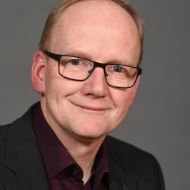- About Aginode
- Data Networks
- Telecom Infrastructure
- Products
-
Resources
- Resources
- Documentation
- Blog
-
Case Studies
- Overview
- Innoasis development in Norway
- Eemsdelta Campus
- Hotelschool The Hague
- Emergency covid hospital, Hong Kong
- Société du Grand Paris
- Centrin Datacentres
- Airbus
- Athens Historic City Hall
- Pinewood Studios
- Goethe University Frankfurt
- Denmark New University Hospital
- University of Toulouse
- CHM Maubeuge: a model for future-ready hospitals
- Webinars
- Software Tools
- Warranty
- Newsroom
- Search
- Contact us
- Compare
- Sign in
Industrial
What could IEC 61850 mean for your network?


Easier management and monitoring of smart grids– but keep an eye on compliance
The need for smart substations
The old power utility model, where energy is centrally produced and transported over vast distances to end-users, is rapidly becoming a thing of the past. Today’s electrical grids and supporting infrastructures are complex, often distributed across large areas, using different power production approaches, and capable of distribute power to and from a multitude of small sources. High-voltage grids are required in urban areas. To realise and manage all of this effectively, it is essential to collect data from each device on the grid and manage the entire infrastructure from remote locations.
Today, substations in centralised and distributed smart grid architectures increasingly act as connectivity hubs and data aggregation points. More and more conventional power substations are being replaced with intelligent substations with facilities for control, measurement and monitoring. These intelligent substations are interconnected and linked to the central station using modern communication networks. In the energy sector, this has resulted in the creation and definition of communication standard IEC 61850: a common language for working with digital substation technology.
Enabling grid interconnectivity and data exchange
As communication on electrical grids becomes more important than ever, IEC 61850 defines special requirements for data exchange between different Intelligent Electronic Devices such as controllers, PLCs, measurement devices, switchgears or Ethernet switches. An increasing number of smart grid applications rely on this standard for intelligent data exchange. IEC 61850 not only defines TCP/IP Ethernet as the basis for all digital communications, making other protocols, such as Motbus or 485, obsolete but also describe special requirements for data communication among power networks.
IEC 61850 brings harmonised protection, control and communication technologies to power networks. This allows grid owners to combine equipment from different vendors in an efficient, highly reliable, standardized network. The standard defines how all connected devices should communicate with each other, with a central station or even between stations. All networked devices in a smart grid, from switches and controllers to sensors can speak with each other and interact with a central SCADA. Devices that are not yet equipped with IP can be cost-effectively connected to networks and managed with Industrial Ethernet switch I/O modules. Industrial switches can manage and receive alerts from simple non-Ethernet devices by using the same technology described in IEC 61850. Energy providers and distribution system operators can manage all network elements and optimize administration and monitoring by taking a standardized approach. This allows easier building of reliable, self-balanced energy infrastructures and makes it possible to manage them in the most efficient way.
Design and implementation considerations
However, to enable fully automatic or remote operation of facilities, IEC 61850 poses specific requirements for the data network design and its components..The standard describes different type of requirements, which are, in part, related to communication and operation environment. In an IEC 61850 based network, Ethernet switches are dedicated to data exchange between IEDs, standardized services and network devices. Communication between these takes place according to requirements described by IEC 61850 in the following parts: 6, 7, 8-1, 9-1 and 9-2. This describes the wide range of communication requirements, including SCL (Substation Configuration description Language), required for seamless modelling and operation of substation automation, common data classes, data modelling, prioritisation, special communication services and much more. It is absolutely critical that switches and other network components used to transfer data in an electrical grid environment are not only compliant with IEC 61850-3, but also comply with the communication requirements of IEC 61850-6, 7, 8 and 9.
The largest share of industrial Ethernet switches currently on the global market complies to IEC 61850-3 only – the general requirements related to construction, design and environmental conditions. Using network devices that are ONLY compliant with this part doesn’t allow the building of reliable grid infrastructure.
Ensuring switches work
Managed industrial Ethernet switches offer a robust solution for today’s communication networks in mission critical smart grids applications. Standard switches without the correct communication functionality described in the standard can’t operate in an IEC 61850 environment. Since 2009, Nexans has been providing Ethernet-based systems and switches for use in IEC 61850 environments. Our LANactive switches support all required parts of the IEC 61850 standard. The LANactive range, developed to meet energy sector challenges, include the industrial multiport iGigaSwitch range with KEMA/DNV-GL-approved IEC 61850 functionality and industrial grade passive components providing copper and fibre cabling for harsh environments. If you have any questions, feel free to get in touch. Our experts are always ready to discuss your unique situation and solutions!
Categories
Our websites
Select your country to find our products and solutions
-
Africa
- Africa
- Ghana
- Ivory Coast
- Morocco
- North West Africa
- Americas
- Asia
- Europe
- Oceania
